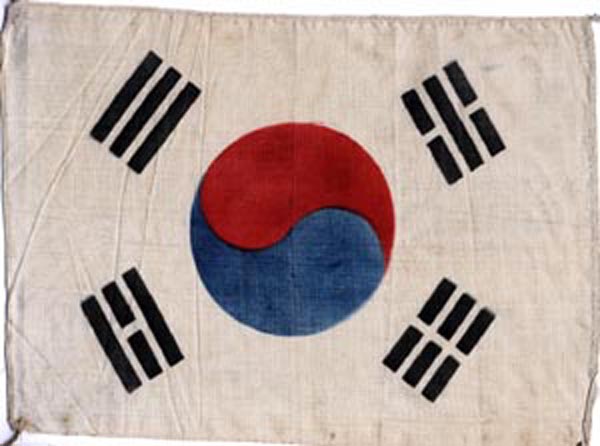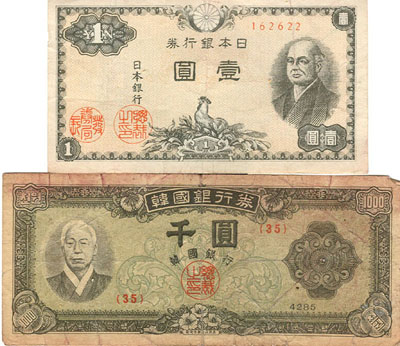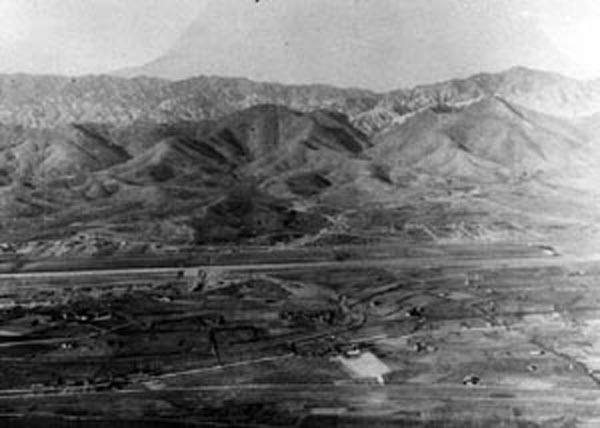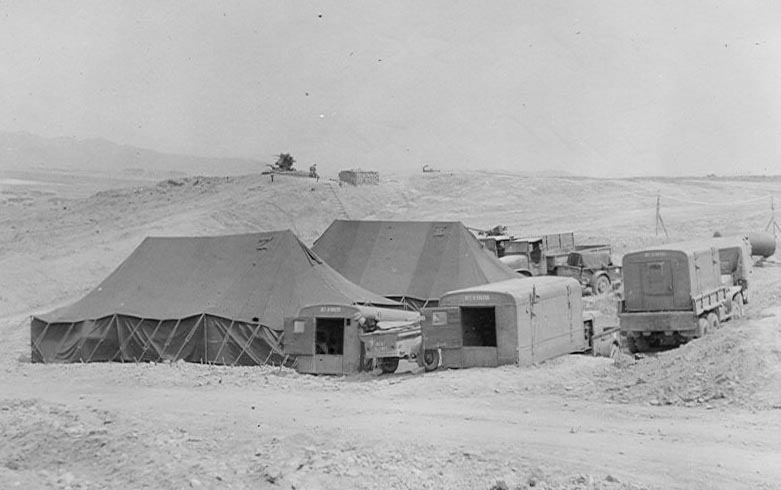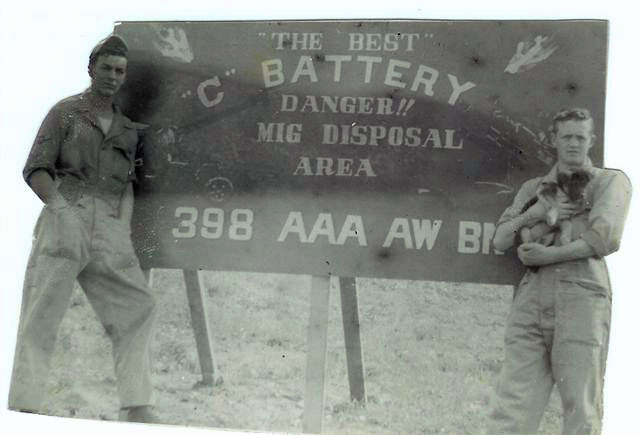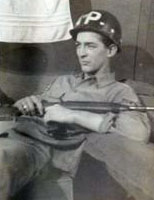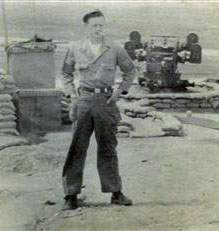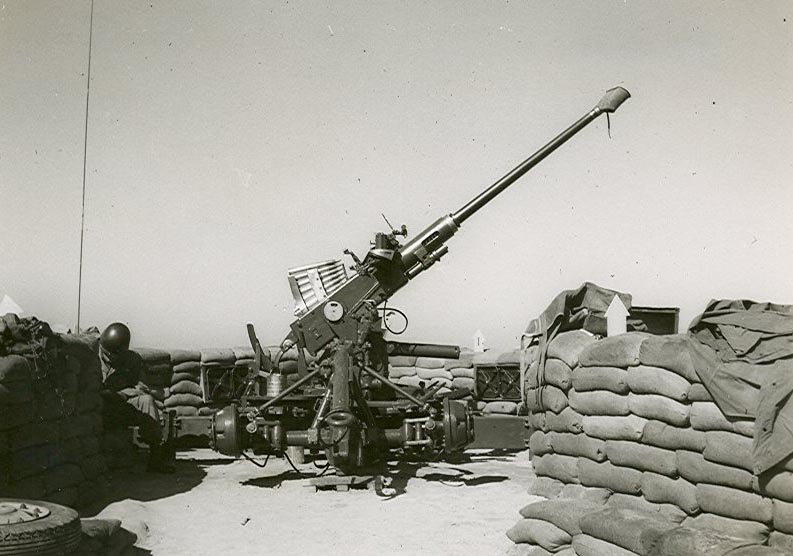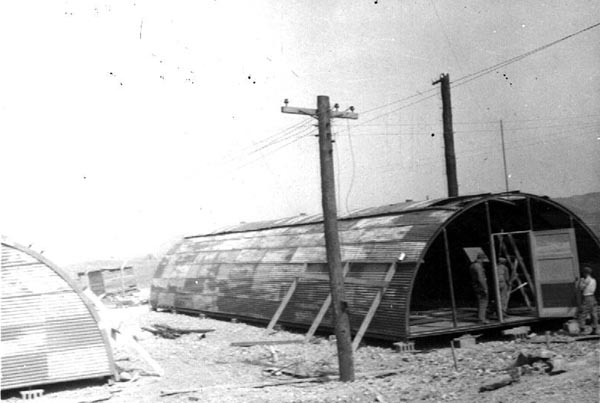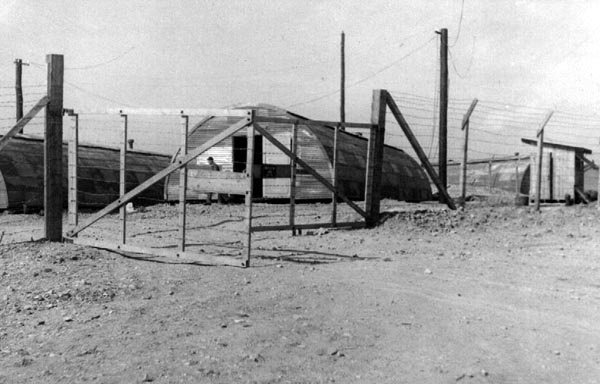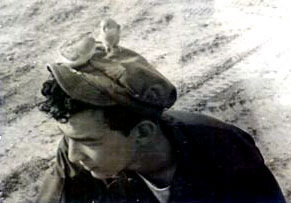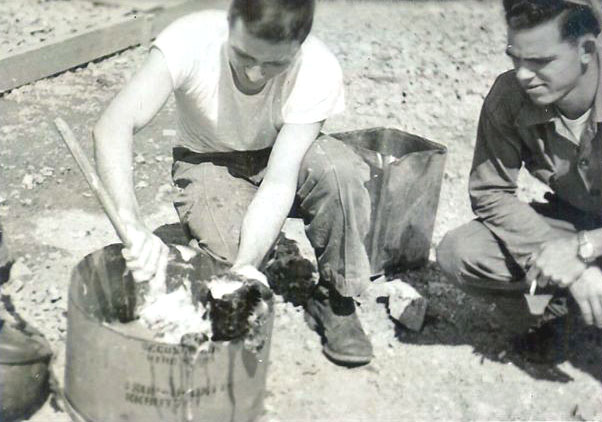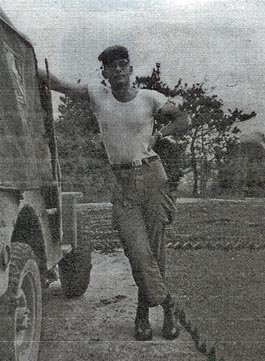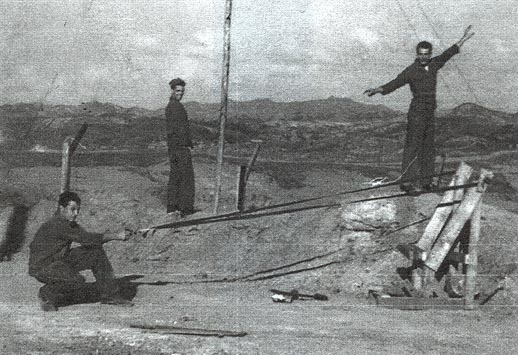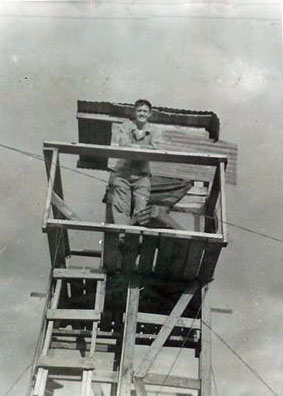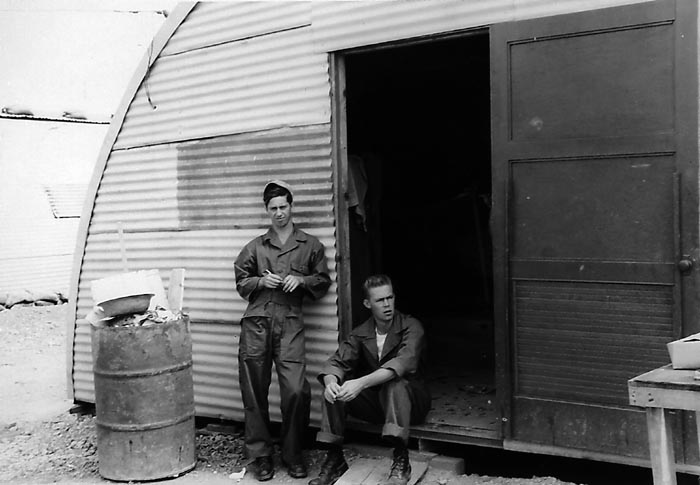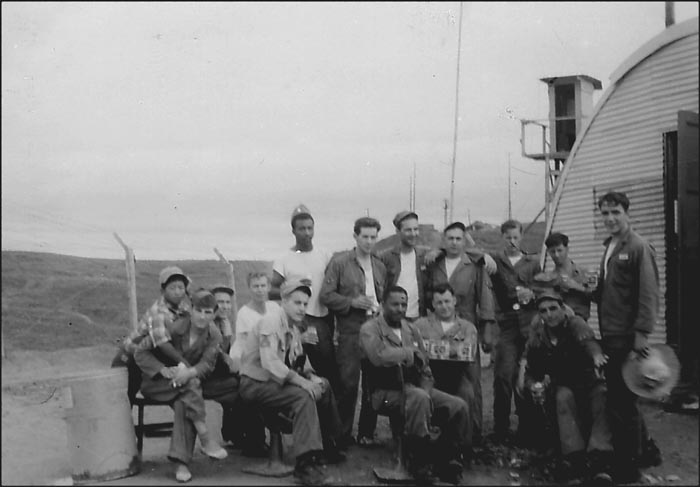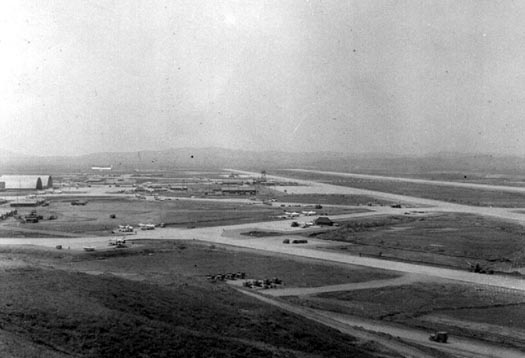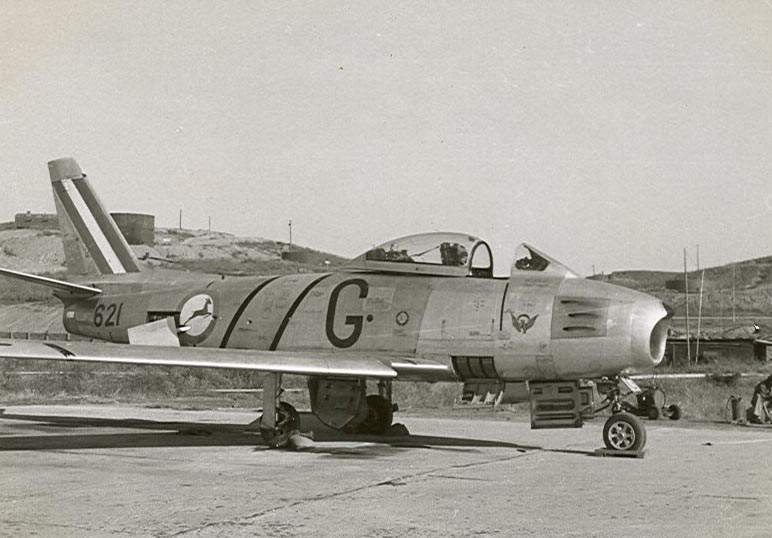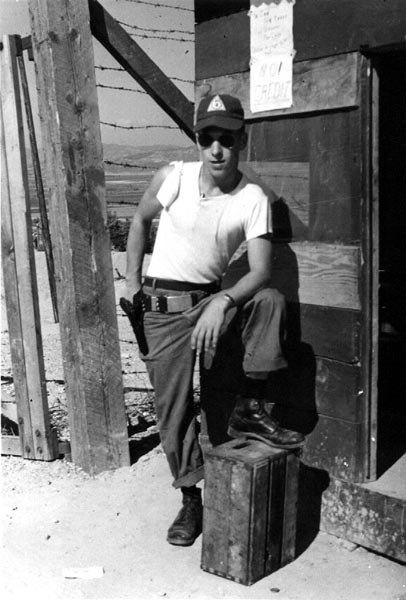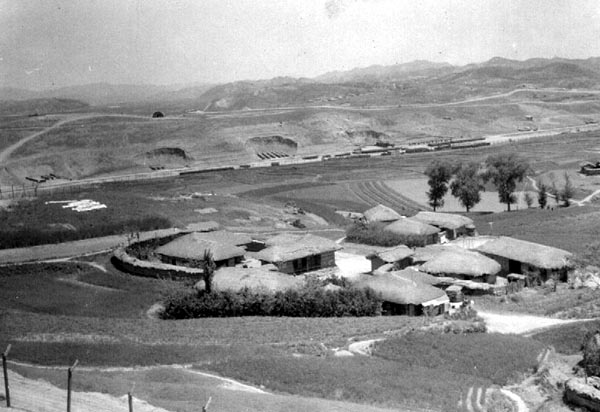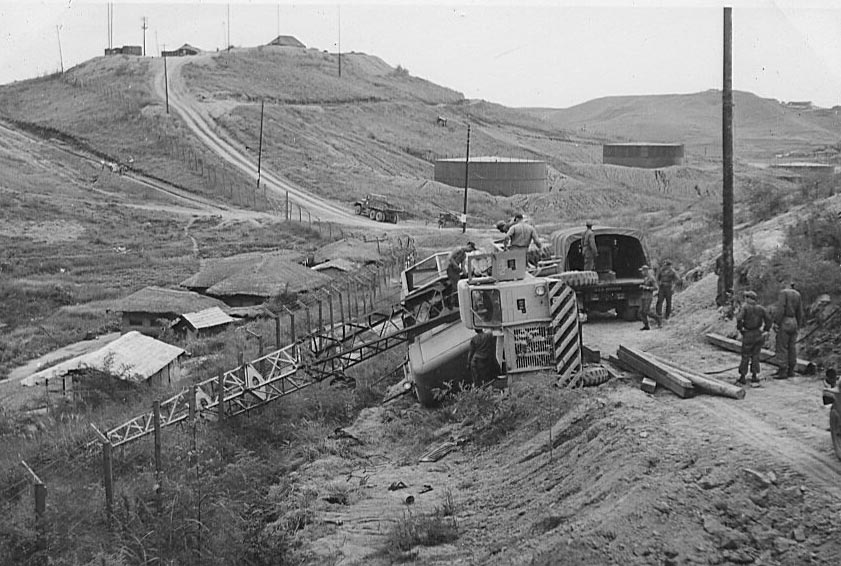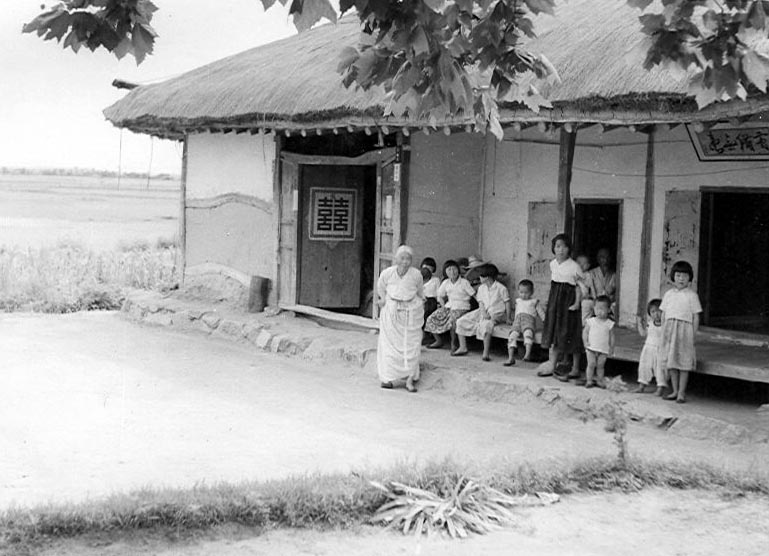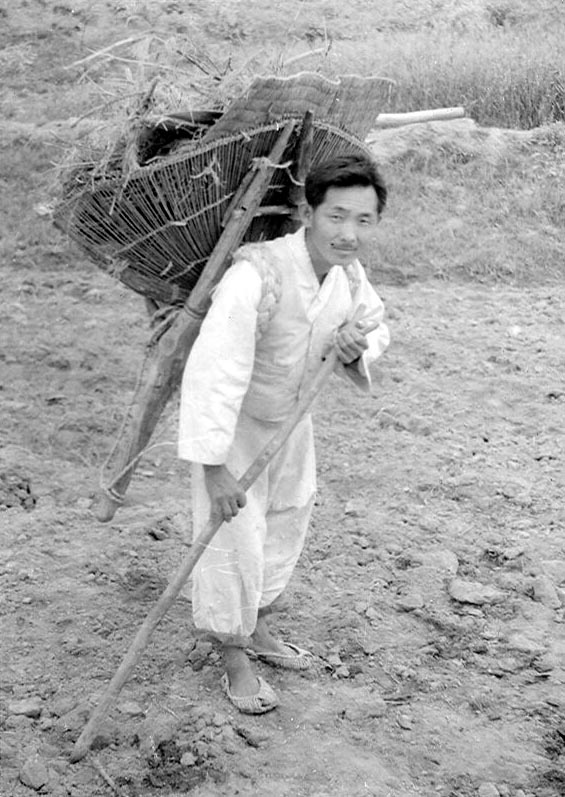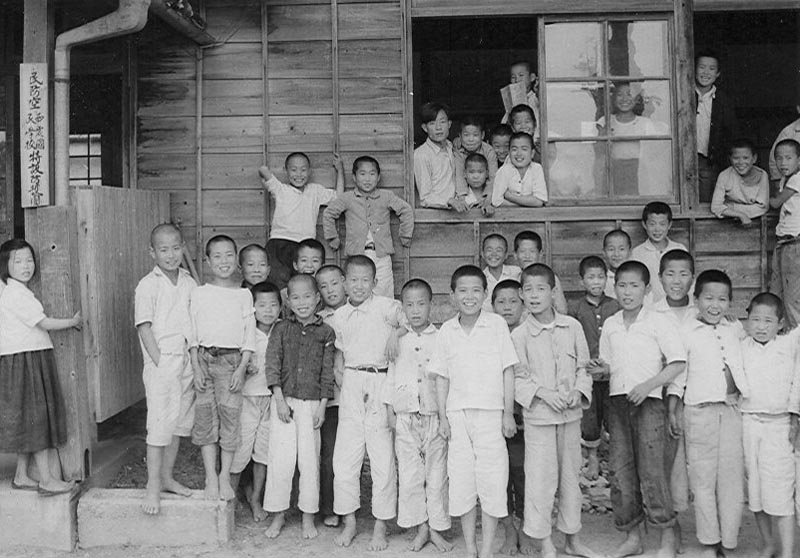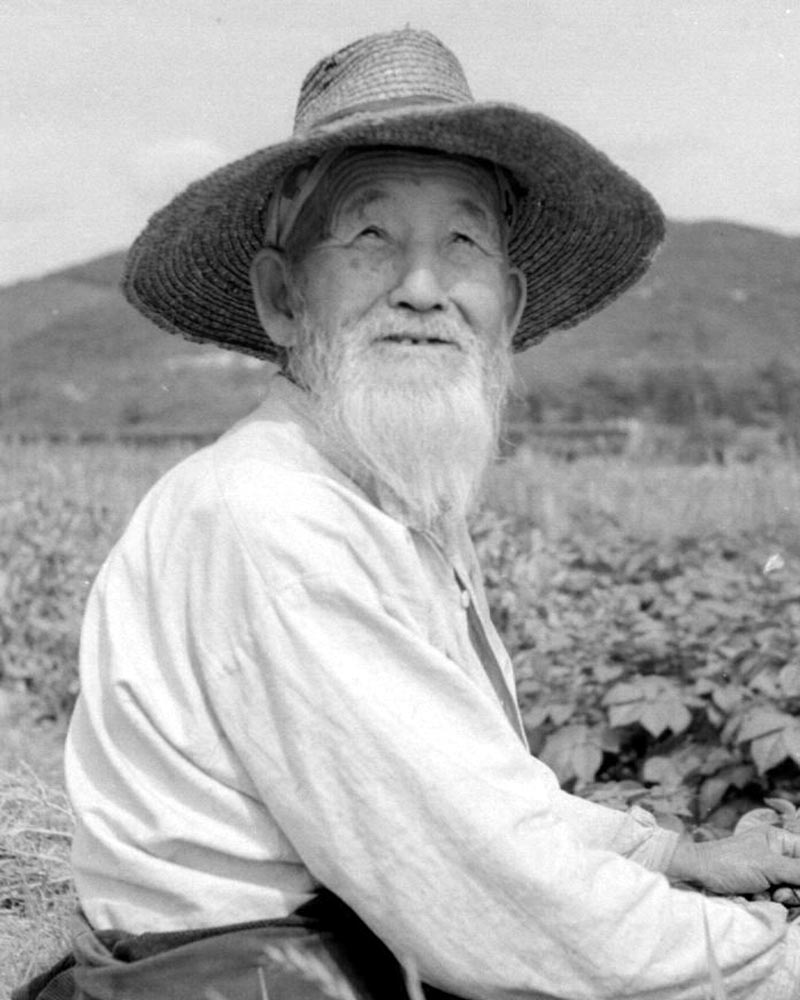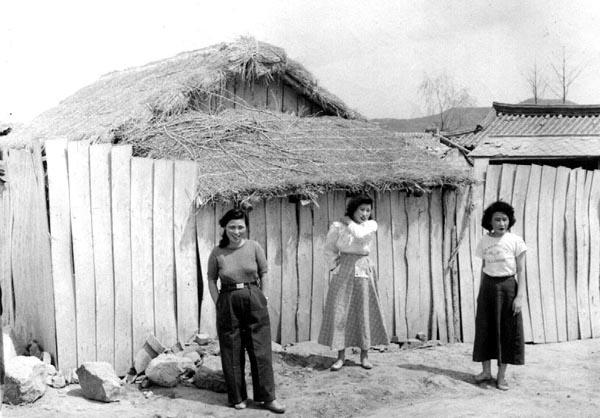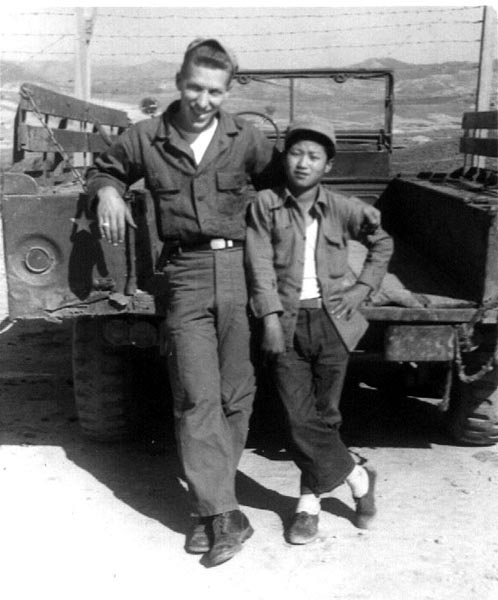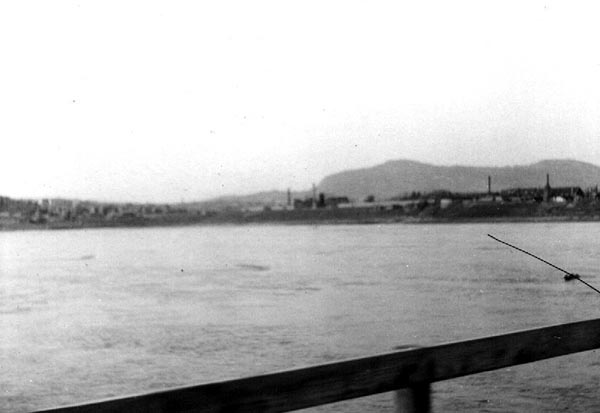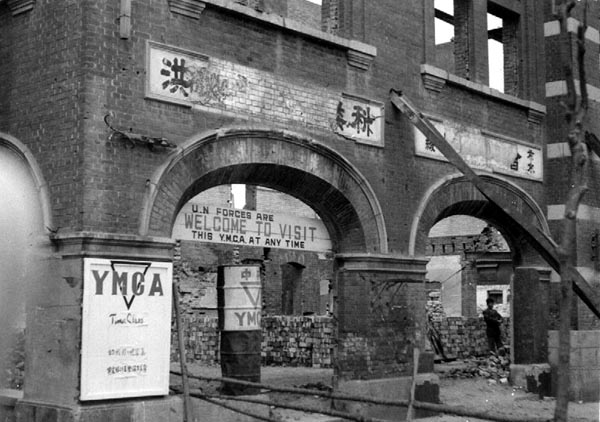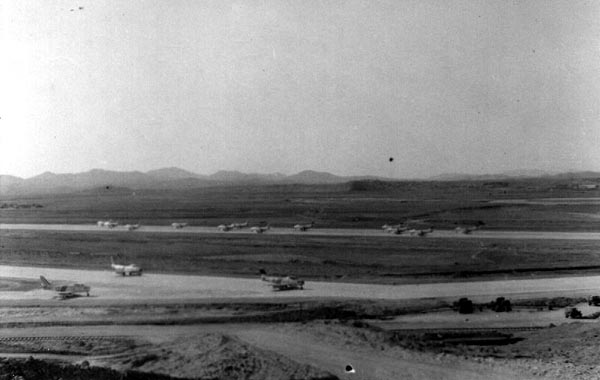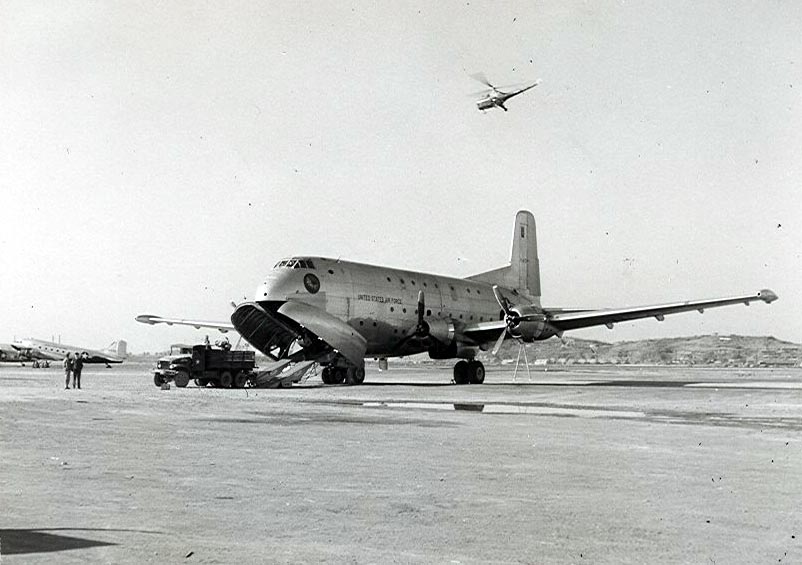K2-Taegu,
K55-Osan-ni
and Seoul, Korea
1953
Return
to Bob
Spiwak’s 136th
CSS COMSEC Website
Please turn on your
speakers
Leaving Detachment 6, Moriyama,
Japan for Detachment 6, Sec 1 K-55,
Korea, during Cherry Blossom Time
April 7 1953
The Korean flag is called taegukki.
Its design symbolizes the
principles of the yin and yang in Oriental philosophy. The circle in
the center
of the flag is divided into two equal parts. The upper red section
represents
the positive cosmic forces of the yang. Conversely, the lower blue
section
represents the negative cosmic forces of the yin. The two forces
together embody
the concepts of continual movement and the balance and harmony that
characterize the sphere of infinity. The circle is surrounded by four
trigrams,
one in each corner. Each trigram symbolizes one of the four universal
elements:
heaven, earth, fire and water." Ivan Sache, 29 December 1998".
One Yen, Japanese and 1000 Won,
Korean
5 cents in Military Script and my
Geneva Conventions Identification
Card
Taegu, K2 airstrip. First stop on
way to Osan-ni, K55
On the way to K55 we lost an engine
on the C46 and had to turn back to
Taegu. Check the feathered prop.
Operations, in the trucks, and our
tents. Hill 170 K55, Osan-ni, Korea.
April, 1953. Note the Quad 50 Caliber AA gun on top of the hill.
We shared Hill 170 with the Army
and ate in their Mess
Kinard & Lowe, Air Police
attached to the 136th Det 6-1 on Hill
170. Lowe is holding Sukoshi. Photo by Larry Kinard
John Lytle Writing Home, 1953,
Photo by Wendell Lowe
Kinard "on Duty". Photo by Larry
Kinard
Wendell Lowe with Quad 50 Caliber
AA Gun in background. Photo by Larry
Kinard
398th AAA AW BN C Battery 40 mm
emplacement. Hill 170 K55, Osan-ni,
Korea. April, 1953.
The building of our qounset huts.
Living quarters on the left and
operations on the right.
Compound near completion. Two holer
latrine on the right.
Operations K55 July, 1953
Inside Operations. Note gun rack
and space heater were Boyle blew up
his can of beans. We found them in the typewriter keys.
Inside Living Quarters, T/sgt.
Brown upper left sitting on cot and
Starnes on the right. Photo by Larry Kinard
Larry Kinard with Hanakosan
& Tyrosan. Photo by Larry Kinard
John Fox & Starnes washing
Sukoshi. Photo by Larry Kinard
Robert R. Meyers 1953, Photo by
Wendell Lowe
John Fox, Starnes & James
O. Wood shooting food cans to the village
below, 1953, Photo by Wendell Lowe
Wendell Lowe in Guard Tower built
with Wing Tip Tank Crates. Photo by
Larry Kinard
Pate (Mechanic) and Kirk K55
Osan-ni, Korea. Early 1953.
Courtesy of Roger "Doc" Hallada
Houseboy Kon, Doc,?,
Kirk,?,Wilson,?,Rhodes,McCormick,?,?,Lowe,?,Pate,
Lytle
Courtesy of Roger "Doc" Hallada
?,?,?,?,Kendall Ropp, Brown,?,Kirk
Courtesy of Roger "Doc" Hallada
K55 airstrip as seen from Hill 170,
April, 1953
"January 22: The 18th FBW withdrew
its remaining F-51 Mustangs
from combat and prepared to transition to Sabres, thus ending the use
of USAF
single engine, propeller-driven aircraft in offensive combat in the
Korean War.
Some of the F-51s went to the ROKAF, and the rest were ferried to
Itazuke,
Japan. The decision to reequip the unit with F-86F-30 Sabres was made
in Oct
52, but problems with delivery had delayed the conversion. (Source:
AFHRA)
(NOTE: On 27 December 1952, No. 2 Squadron flew its last missions in
the
veteran F-51Ds. However, delivery problems held up the conversion to
the Sabres
until early 1953. On 30 December 1952, the 18th Wing moved from Chinhae
to the
new air base that had been built at Osan in anticipation of the arrival
of the
F86s.)"
"January 28: The l8th Fighter
Bomber Wing received its first three
PAINTED F-86F Sabres. One was marked in SAAF colors and the other two
in 18th
FBW colored bands. The South African Air Force's (SAAF) No. 2 Squadron,
the
"Springboks" (antelopes) had a springbok silhouette painted on the
sides of its Mustangs. The 12th, the "Fightin' Foxey Few" had yellow
propeller spinners with shark's teeth on their noses like the Flying
Tigers.
The 67th, the "Fightin' Cocks," had red spinners with a rooster
logo."
Excerpts from Kalani O'Sullivan's
website
South African 2nd Squadron F-86
The following excerpt is from
Kalani O'Sullivan's website
"The United Nations acceded to the
request of the United States to
intervene militarily on the side of South Korea. On 12 August 1950, the
South
African government announced its intention of placing No. 2 Squadron,
the
so-called "the Flying Cheetahs" of the South African Air Force at the
disposal of the United Nations. The offer was accepted, and on 26
September
1950, 49 officers and 206 other ranks, all volunteers, left from Durban
for
Johnson Air Base in, Yokohama, Japan, prior to their deployment in
Korea. All
these men were seasoned pilots and technicians having an outstanding
World War
II record from operations in Eastern Africa, Ethiopia, Sicily, Italy
and the
Middle East.
2 Squadron had a long and
distinguished record of service in Korea
flying F-51D Mustangs and later F-86F Sabres. Their role was mainly
flying
ground attack and interdiction missions as one of the squadrons making
up the
USAF's 18th Fighter Bomber Wing.
The first flight of four F-51D
Mustangs departed for Korea on 16
November 1950 and the first operational sortie was flown three days
later from
K9. This was at a stage when the United Nations forces were retreating
in front
of the advancing enemy. In freezing cold and poor weather, the aircraft
had to
continue operating and be maintained and armed in the open, moving from
K-24
(Pyongyang East Air Field) to K-13 (Suwon Airbase), K-10 (Chinhae
Airbase) and
finally K-55 Airbase at Osan in January 1953, which became the all jet
fighter
base for the 18th Fighter Bomber Wing. Here the squadron immediately
started to
convert to the Canadian F-86F Sabre jet fighter. On 11 March 1953 the
squadron
flew it first operational sortie with the F-86F Sabre. The Squadron now
flew,
in addition to its ground attack role, high-level interdiction and
standing
patrols along the Yalu River.
The cease-fire was signed at
Panmunjom at 11:00 hours on 27 July 1953.
During the Korean conflict the squadron flew a grand total of 12 067
sorties.
A total of 243 Air Force officers
and 545 other ranks served in Korea.
34 pilots out of 152 and 2 other ranks gave their lives. Eight
prisoners of war
were returned. Aircraft losses amounted to 74 out of 97 Mustangs and
four out
of 22 Sabres.
On 31 October 1953, the last South
African Force left Korea."
Pulling guard duty. Note the
cigarettes on the shoulder. Pretty cool.
Overlooking Bomb Dump and Namsan-ni
outside our Compound. In the 1950s,
there was no road to the right of the Main Gate leading to the Namsan
Village
area. The village below Hill 170 became the first bar areas for Osan
AB, but
soon returned to being a farming village once the Main Gate opened.
Looking out over Namsan-ni to the
left of the Bomb Dump towards the end
of the runway. Notice the villages in the distance.
"The Namsan-ni houses along
fenceline while looking towards the
end-of-runway has a nice shot of Shinjang-ni (to the right of the
picture) and
the two others Ya-ri left-middle and Shin-Ya-ri in the distance to the
left.
That portion of Shinjang-ni near the EOR would have had to be relocated
after
they built the Perimeter Road...and Shinjang-ni was around into the
1980s.
Yari/Shin-Yari both disappeared in 1954 with the Perimeter Road
construction".
From Kalani O'Sullivan.
Looking to the right of the Bomb
Dump over Namsan-ni toward Hill 180.
Crane tipped over while trying to set telephone poles. Hill 170 is to
the
right.
Namsan Village (1968) (Bill Bayless)
In the 1968 photo above, ("This
photo was taken from the village
looking up at Hill 170." Bob Spiwak) the mudwattle houses (choga-chip)
in
the center area are those from the 1950s. Notice that the older houses
are
grayish in color, while the newer stucco houses are lighter in tone. In
the
1953 photo the house on the left with a wall when seen from the rear is
located
on the right. By 1968, it was still there, but some new houses to the
area. The
area had returned to being purely agricultural. By 2005, the mudwattle
houses
were gone and the place they were at was now an open field. However,
the two
houses at the bottom of the photo still remained occupied by the
original
residents. The house to the right cares for a small farm patch planted
where
the original homes once stood.
Description and photo from Kalani
O'Sullivan's website
Black market mamasans, from
Namsan-ni, just outside the compound.
Osan-ni Farmers' Market. (NOTE:
This open market supposedly has its
roots dating back to 1742, but you could hardly tell that from this
scene in
1953.) (Description by Kalani O’Sullivan).
Osan-ni little girl (NOTE: Children
were left to care for their younger
siblings as the mother and father had to work the farms. The
traditional method
for carrying babies on one's back with a swaddling blanket tied around
the
waist.) (1953) (Description by Kalani O’Sullivan).
Osan-ni kids and Choga-chip
(country house) (NOTE: Mud-wattle frame
with rice-thatch roof. Kitchen is the room to the left. Open courtyard
in front
traditional for drying farm produce, threshing rice.) (1953)
(Description by
Kalani O’Sullivan).
Osan-ni farmer with Chige (A-frame)
(NOTE: In the a-frame is firewood
from twigs as it was so scarce. Notice he is wearing the traditional
farmer
sandals made of woven rice reeds.) (1953) (Description by Kalani
O’Sullivan ).
Seojong-ni Elementary School (1953)
"The photo of the school kids is
inaccurate as to school name.
That is NOT the Seojong-ni School -- and it is NOT the Kumgak-ri school
as you
said it was close in walking distance. There are three villages to
choose from:
Namsan-ni, Mokchon-ni near the railroad tracks and Shinjang-ni on the
other
side of the Bomb Dump Hill. Mr. Oh Sun-soo said it is of Japanese
construction". Kalani O’Sullivan.
If anyone knows the name or origin
of the school please lets us know.
Old Papasan at Osan-ni (NOTE:
Typical farming garb with woven hat.
Plants being cultivated appear to be sesame seed plants -- whose leaves
are
eaten, seeds used in cooking, oil used for meat preparation. (1953)
(Description by Kalani O’Sullivan).
The village called Namsan-ni down
the bottom of the hill on the east
side of Hill 170, between our compound and the bomb dump.
It had several working girls.
"However, observe the structure of
the building. The building to the right has rough thatch roof, but it
appears
to not have been replaced in many years. There is a rough patch to the
left
side of the roof that was made by simply the throwing thatch over the
leak and
tying it down instead of using thatch bundles to repair a leaking area.
The
building on the right is an old farm house with a tile roof indicating
that it
was pre-Korean war."
Excerpt from Kalani O'Sullivan's
website.
I remember the USAF Medics chasing
the girls to give them penicillin
shots (Bob Spiwak).
Kon the houseboy and I.
A bar in Namsan-ni.
"The sign above the door that says
"ICE COLD BEER SOLD
HERE." was on every store and little stands along MSR-1 -- specifically
for the GI trade. But notice the roof construction. The material
appears to be
tar paper that is tacked down by strips. This same type of construction
was
typical in Chicol-ni when the shanty-town went up. Again the assumption
is that
the materials were obtained from refuse (or otherwise) materials from
Osan AB.
The louvered construction of the windows are unusual for Korea at that
time as
they prefered shutters for better air circulation."
Excerpt from Kalani O'Sullivan
Namsan-ni scene taken near the
local bar described above.
"The photo of the village scene is
unbelievable!!! SUPER!!! Who
ever would have guessed a 24-hour service photo shop in Namsan-ni. The
shop
name is Jaeil Photo Shop. Also in the scene it looks like someone is
selling
some furniture right beneath sign. The chairs and table could have been
a
restaurant scene, but right along side are Korean-style desks (floor)
with
drawers. The building to the left is a restaurant (but can't make out
sign) as
seen by the yoke for carrying water buckets from well, a steamer atop
the
center kimchi pot and the country cook pot atop what appears to be a
portable
charcoal cook stove. Notice that the stove is sitting on a empty wire
spool".
Kalini O'Sullivan.
Harrop, Morrow and I arrive on TDY
at the 5th Air Force in Seoul.
Crossing the Han river.
Capital of Seoul, May 1953. Not a
window left.
We couldn't stay here.
Back at K55 on a pheasant hunt with
a M1 carbine.
F86 fighter/bombers leaving on a
mission to unload their bombs just
before the July 27th 1953 truce.
Stars & Stripes, Truce is
Signed
Hunting license from K55 Osan-ni,
Korea and drivers license used in
Nagoya and K55.
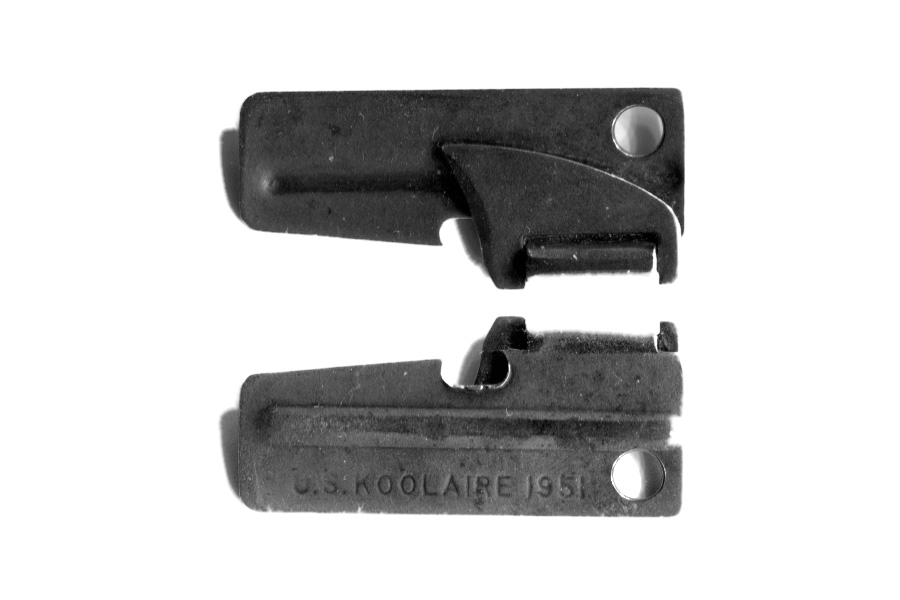
Stop over at Kimpo, K16, on C 124
while heading back to Nagoya, Japan.
November 2, 1953

